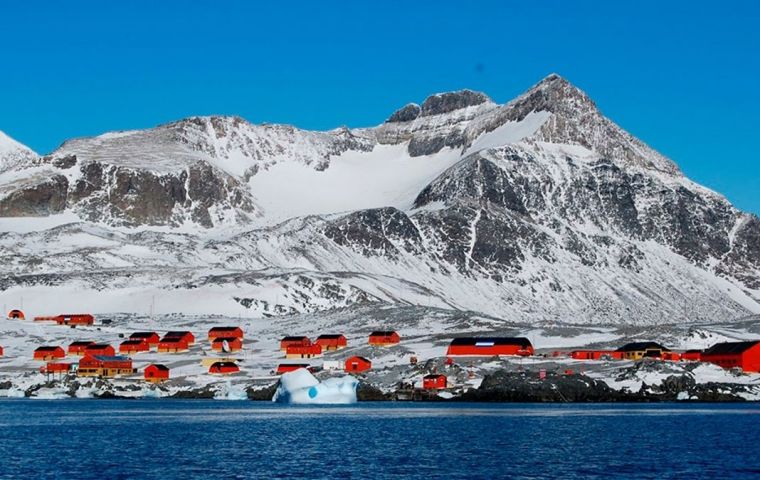MercoPress. South Atlantic News Agency
Temperature record for Antarctica in 2020, 18,3` Celsius at Argentine station
 The previous record for the Antarctic region was 17.5°C (63.5°F) recorded on 24 March 2015 also at Esperanza Research Station
The previous record for the Antarctic region was 17.5°C (63.5°F) recorded on 24 March 2015 also at Esperanza Research Station The World Meteorological Organization (WMO) has recognized a new record high temperature for the Antarctic continent of 18.3° Celsius on 6 February 2020 at the Argentine Esperanza station.
The previous record for the Antarctic region (continental, including mainland and surrounding islands] was 17.5°C (63.5°F) recorded on 24 March 2015 also at Esperanza Research Station. The record for the Antarctic region (all ice/land south of 60 degrees latitude) is 19.8C, taken on Signy Island in January 1982.
“Verification of this maximum temperature record is important because it helps us to build up a picture of the weather and climate in one of Earth’s final frontiers. Even more so than the Arctic, The Antarctic, is poorly covered in terms of continuous and sustained weather and climate observations and forecasts, even though both play an important role in driving climate and ocean patterns and in sea-level rise,” said WMO Secretary-General Prof. Petteri Taalas.
“The Antarctic Peninsula (the northwest tip near to South America) is among the fastest-warming regions of the planet, almost 3°C over the last 50 years. This new temperature record is therefore consistent with the climate change we are observing. WMO is working in partnership with the Antarctic Treaty System to help conserve this pristine continent,” said Prof. Taalas.
A committee for WMO’s Weather and Climate Extremes Archive conducted an extensive review of the weather situation on the Antarctic peninsula at the time of the reported records. It determined that a large high-pressure system over the area created föhn conditions (down-slope winds producing significant surface warming) and resulted in local warming at both Esperanza Station and Seymour Island. Past evaluations have demonstrated that such meteorological conditions are conducive for producing record temperature scenarios.
The committee also examined the two observations’ instrumental setups. The examination of the data and metadata of the Esperanza station observation, operated by Argentina’s national meteorological service (Servicio Meteorológico Nacional, SMN) revealed no major concerns.
However, a detailed analysis of data and metadata of the Seymour Island permafrost monitoring station operated by a Brazilian polar science research team indicated that an improvised radiation shield led to a demonstrable thermal bias error for the temperature sensor.
The WMO international evaluation committee consisted of polar science and climate experts from Argentina, Brazil, New Zealand, Spain, the United Kingdom and the United States.




Top Comments
Disclaimer & comment rulesCommenting for this story is now closed.
If you have a Facebook account, become a fan and comment on our Facebook Page!